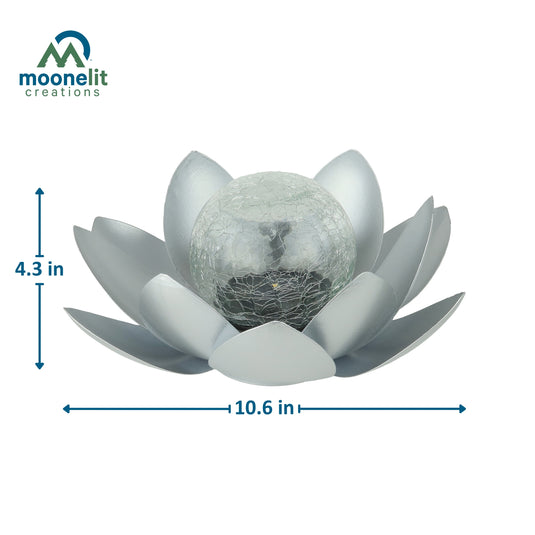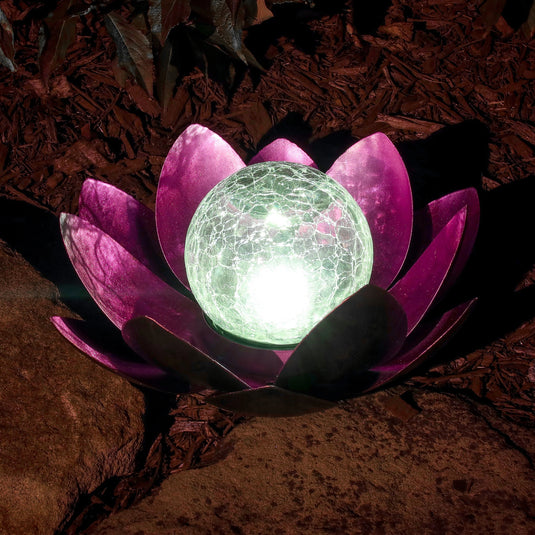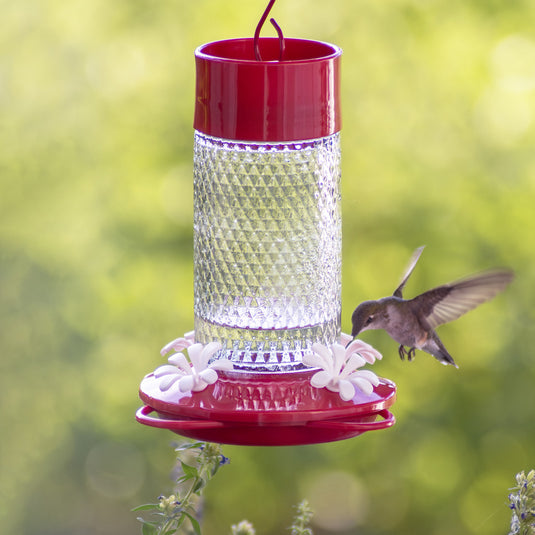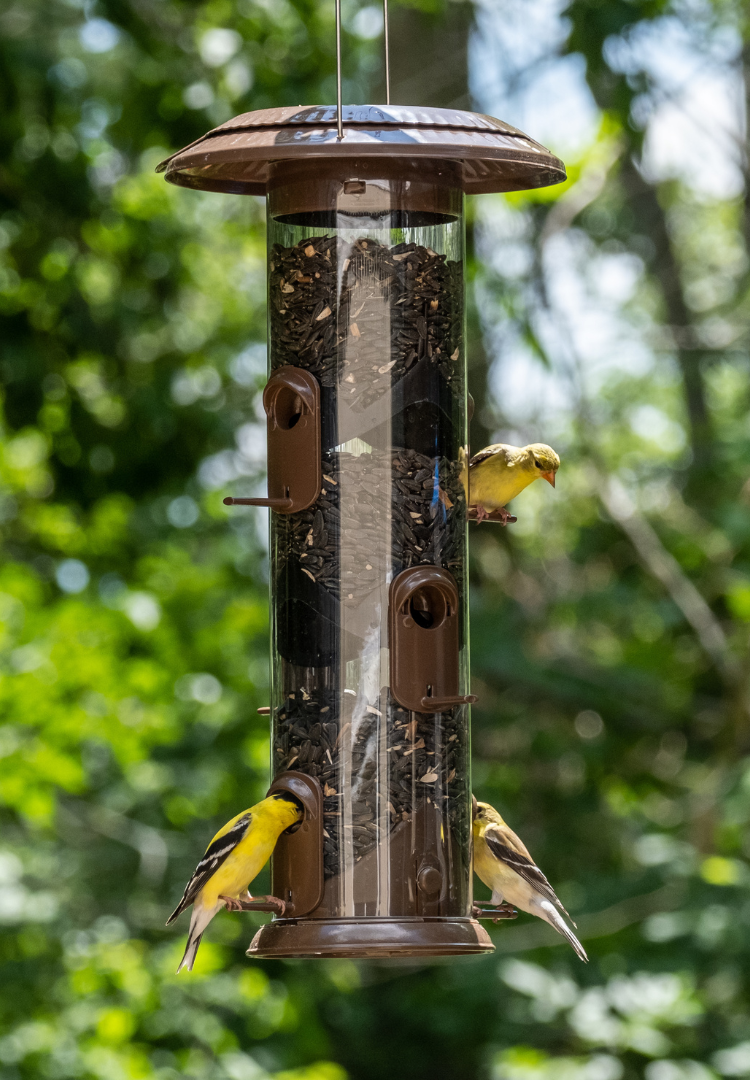Setting up a nectar feeder is one of the simplest ways to attract hummingbirds to your yard. Being a responsible hummingbird host can sometimes come with challenges, so we’ve put together the solutions to some of the most common hummingbird feeder questions to help you get the most out of your hummingbird feeder!

Why aren’t the hummingbirds coming to my feeder?
There are a few different factors that could be causing a hummingbird to choose a different source of food. Hummingbirds are migratory birds, meaning they leave and return from a specific area seasonally. As they return from migration and end up in their ultimate destination, they will remember the source of their first meals - oftentimes coming back to the same feeders repeatedly. For the best chance of hummingbirds discovering your feeder, it is recommended to have it up and ready before they return from their winter migration. Be sure to research the migratory pattern of hummingbirds in your area to make sure you haven’t put your feeder out too late, since this can cause them to overlook it later in the season.
One thing to keep in mind is that all birds are creatures of habit. They may be hesitant to try out a new feeder, especially if you have been offering nectar in other feeders – a tried and true food source. It could also take some time for the hummingbirds to get used to a new landing pattern or learn the mechanics of drinking from a new feeding port. It may take several weeks before the hummingbirds find and begin feeding regularly from a new feeder. Before making any changes, try waiting at least two weeks to give them enough time to discover your feeder.
Here are some more tips to help attract birds to your hummingbird feeder:
- Take down other feeders: Hummingbirds may prefer to feed from dependable food sources like existing feeders. If you have other nectar feeders in your yard, try temporarily taking them down until the hummingbirds find and use the new feeder. Once they are regularly using the new feeder, existing feeders can go back up.
- Increase the sugar content: Try slightly increasing the sugar content of your nectar. This will immediately reward the hummingbirds for visiting your feeder and encourage them to come back. Once until the hummingbirds are regularly drinking from your feeder, you can then lower the water to sugar ratio back down to the recommended 4:1.
- Keep it clean: It is recommended nectar feeders be cleaned at least every 4-5 days. To clean, take down your feeder and discard any unconsumed sugar water. Take apart your feeder and flush it with warm water. You must also change the nectar frequently - at least twice a week. If you notice that the nectar is turning milky, or that white strings or black spots are growing in it, change it more often. If you notice any mold, take down the feeder immediately, give it a thorough cleaning and follow the steps below to prevent mold growth on your feeder.
- Change locations: Placing feeders near flower beds or planters may naturally attract more hummingbirds to your feeder. Feeders should be hung or mounted closer than 3 feet from a window or farther than 15 feet from a window to help prevent fatal window collisions.
What should I put in my hummingbird feeder?
The formula for hummingbird food is simple: about one part white granulated sugar to four parts water. Boil the water for approximately 2 minutes, add the sugar, and stir to dissolve thoroughly. We do not recommend adding red dye to the nectar mixture. Cover and allow the nectar to cool before using or pouring into a clean storage bottle. A large batch of nectar can be made and stored in the refrigerator for up to two weeks. This makes refilling the feeder easy so you won't mind doing it every few days.

How do I keep mold from growing on my hummingbird feeder?
It is inevitable that sugar water will eventually break down and cause mold, fungus, or other harmful bacteria to grow inside of a hummingbird feeder. To prevent mold growth, hummingbird feeders should be taken down and cleaned at least every 4-5 days. To clean, take down your feeder and discard any unconsumed sugar water. Take apart your feeder and flush it with warm water. If mold is present, you can sanitize the feeder by placing all dishwasher-safe parts in the dishwasher for a thorough cleaning. If washing by hand, soak and clean the feeder thoroughly with a solution of ¼ cup bleach to one gallon of water. Rinse thoroughly and allow to dry completely before refilling.
Since mold growth can be accelerated by heat, especially in the warmer summer months, try keeping your feeder in a shaded area. Keeping the nectar cool helps to delay fermentation which is the process that causes nectar to spoil and mold to grow.
How do I prevent bees at my hummingbird feeder?
Bees, wasps, and hornets are hardly welcome guests at any feeder and can be harmful to hummingbirds if stung. Typically, if bees don’t have access to the nectar, they should eventually move on from the feeder to a more rewarding source. Here are some additional tips to help deter the bees:
- Keep it clean: Make sure there is no exposed nectar on or around the outside of your feeder and thoroughly clean it with warm soapy water every 4-5 days at minimum.
- Change it up: Periodically move your feeder. Birds will usually look around and find a relocated feeder, but insects will not.
- Lower the nectar level: If using a dish style feeder, try decreasing the amount of nectar in your in the dish to keep it lower than the feeding ports. This will make it more difficult for bees to reach. Keep in mind that a hummingbird’s tongue is twice as long as its beak so it can easily reach near the bottom of the dish.
- Get in the shade: If the feeder is currently in the sun, try moving it to a more shaded area.
Bee-resistant hummingbird feeders:
How do I keep ants off my hummingbird feeder?
Although hummingbirds do eat insects, they do not eat ants. The presence of ants on your hummingbird feeder can prevent them from using it, or the ants may enter the feeder and contaminate the nectar which can be harmful to hummingbirds. Here are some ant-proofing tips to try:
-
Use an ant moat: Many hummingbird feeders have built-in ant moats, which trap ants in a small cup of water before they have the opportunity to reach the feeder. If your feeder does not come with an ant moat, you may choose to purchase one separately. Be sure to keep it full of water! If the weather is particularly hot and the water is evaporating quickly, check it regularly to prevent it from sitting empty.

- Keep it clean: Make sure there is no exposed nectar on or around the outside of your feeder and thoroughly clean it with warm soapy water every 4-5 days at minimum.
- Change it up: Periodically move your feeder. Birds will usually look around and find a relocated feeder, but insects will not.
- Get in the shade: If the feeder is currently in the sun, try moving it to a more shaded area.
- Try fishing line: You may try hanging your feeder using fishing line, as it is very difficult for ants to climb. Keep in mind this may not be feasible for heavier feeders.
Hummingbird feeders with a built-in ant moat:
FEATURED HUMMINGBIRD FEEDERS























I use a commercial hummingbird nectar. I am finding that it congeals in the feader and is almost like jello. What causes this, and how can I prevent it, please?
Hi Virginia, Thank you for writing in to Nature’s Way. We do suggest taking feeder in at night if you have a problem with raccoons which it sounds like you are doing when possible. You can visit our Replacement Parts store page https://bit.ly/4dX3s85 for sets of replacement flower ports. All the best.
My problem is the raccoons that visit at night! if I don’t take my Mason Jar hummingbird feeder in before they get there they pull apart the feeder flowers to tip the jar into their mouth, or they will actually take it down from the hanger to the ground and tear it apart! I appreciate the extra flowers that came in my kits, but I am down to my last unused kit, but only have 1 extra red flower! (I started with four new Mason Jar kits this season and now no more are for sale near me or on the website. Our hummingbird season goes until mid-October.)
Can I buy additional red flowers that “click in place” in the drilled holes of the jar I need at least another eight flowers.
Thanks!
Hi Sharon. Thank you for contacting Nature’s Way Bird Products. You can see our cleaning tips and suggestions on our blog https://bit.ly/3Wnps4O. Happy birding!
I have trouble keeping my gaskets clean for my LED hummingbird feeders. Are there any tips you can give me? I’ve already replaced the 2 gaskets once, just a couple of years ago.